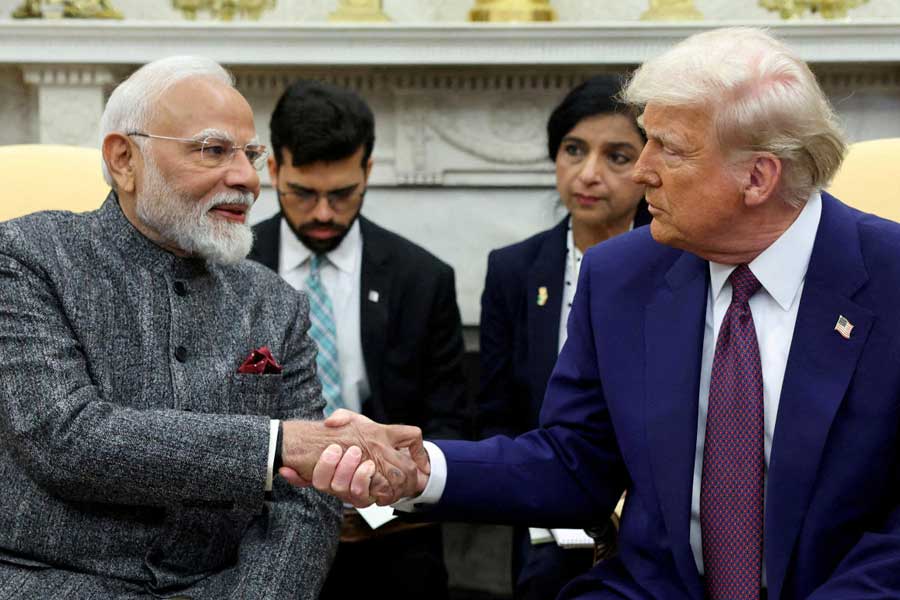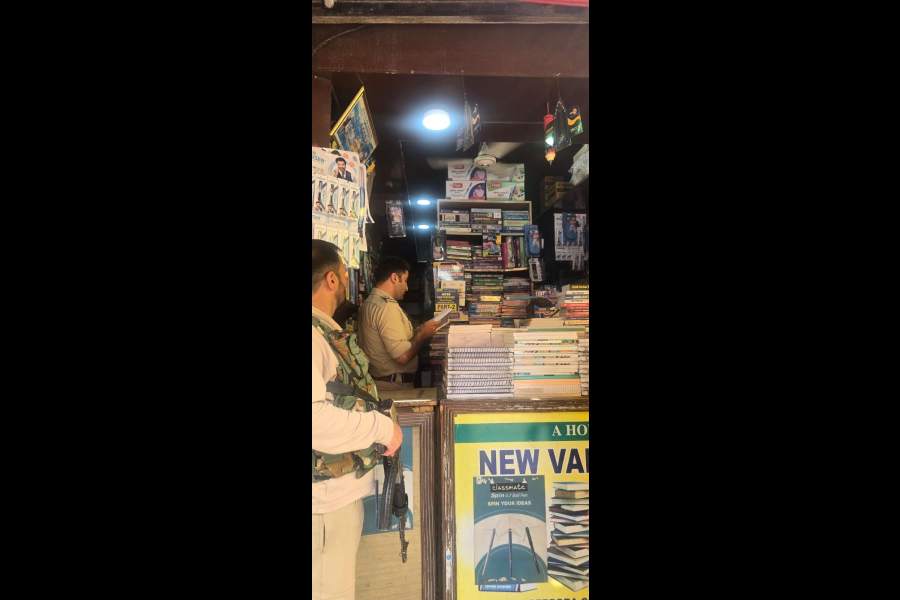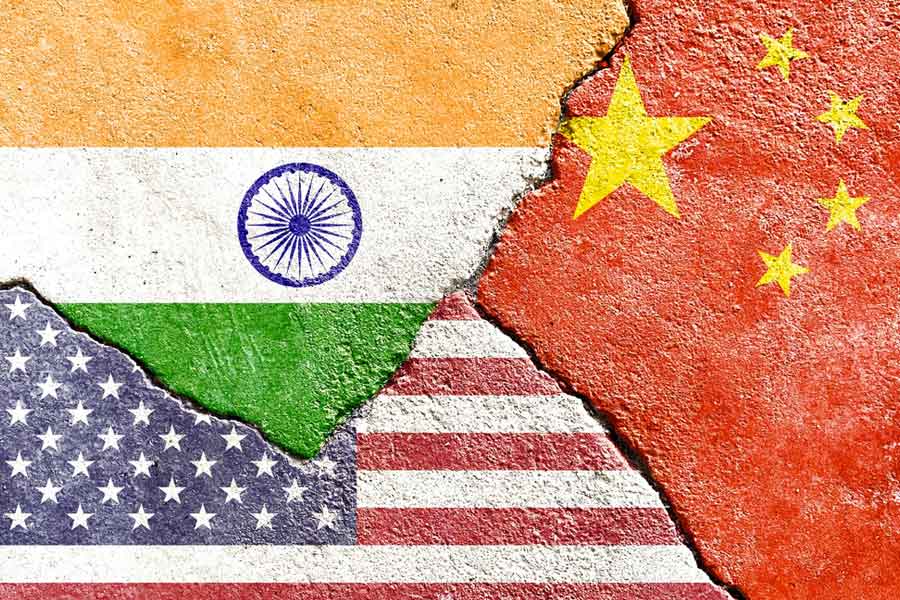
New Delhi, Sept. 14: Political bullets flew today as the foundation stone was laid for the country's first bullet train that was projected variously as a symbol of new India and misplaced priorities.
Drowned in the crossfire was a grim reminder of the country's unsafe tracks: a coach of Jammu Tawi-New Delhi Rajdhani Express derailed this morning at New Delhi Railway station. No one was injured but it lengthened the list of derailments that had earlier this month recorded as many as three mishaps on a single day.
The economic viability of the Mumbai-Ahmedabad bullet train project - launched in the Gujarat city today by Prime Minister Narendra Modi and his Japanese counterpart Shinzo Abe - too has come under a cloud. The project will cost Rs 1.08 lakh crore, of which Rs 88,000 crore will be loaned by the Japanese at a rock-bottom interest rate.
But an IIM Ahmedabad study last year had estimated the train would have to ferry 88,000-118,000 passengers a day, that is, undertake 100 trips daily (50 trips each way), for the railways to keep it financially viable. "So, we need three trains every hour in each direction," the IIM-A study said, apparently excluding seven or eight hours at night.
According to an estimate by the railways, the bullet trains are expected to make profits by 2050. The Japanese loan has to be repaid by 2067 at a nominal interest of 0.1 per cent.
Construction for the 508km bullet train project will begin in 2018-end, and the trains are expected to be operational by 2023.
The train, running at an operating speed of 320kmph and maximum speed of 350kmph, is expected to cut the travel time between Ahmedabad and Mumbai from seven hours to less than three hours. If the train stops at all stations, it will take 2.58 hours; with limited stops, 2.07 hours. The project will involve a 21km tunnel, of which 7km will be under water.
According to the feasibility report, the fares are expected to be 1.5 times the current first-class AC fare on the Mumbai-Ahmedabad route, meaning a passenger will have to pay between Rs 2,700 and Rs 3,000.
The high-speed train will initially have 10 cars that can accommodate 750 people. Later, the train will have 16 cars that can ferry 1,200 passengers.
Prime Minister Modi portrayed the project as a harbinger of change. "From Europe to China, the bullet train's image can be seen everywhere. Not just economical but also societal changes have been brought about by these trains," Modi said in Ahmedabad.
He also sent a message to the doubters. "When earlier I talked about the bullet train, they used to say it was big talk, and now when it has come they are saying what is the need for it," Modi said.
Abe, the Japanese Prime Minister, stuck to the theme and said: "My good friend Prime Minister Narendra Modi is a farsighted leader. He took a decision two years ago to bring a high-speed train in India and to create a new India."
The Opposition Congress as well as the BJP's ally Shiv Sena questioned the objective behind launching the train. The Congress underscored that it was not against innovation but described the project as a " chunavi bullet train", suggesting the government was pursuing the scheme in haste with an eye on the upcoming Gujarat polls.
The Sena was more scathing. "We are getting a bullet train without asking for it. We do not know exactly which problem will this problem solve," the Sena said in its mouthpiece Saamana.
The Sena drew a contrast that is certain to touch a raw nerve with the Prime Minister. Jawaharlal Nehru laid the foundation for several projects, from the Bhakra Nangal to the Bhabha Atomic Research Centre, to ensure the country advanced in technology and science. All these projects were needed for the nation, it said. "Does this bullet train fit into the needs of the country?"
The Sena also referred to agrarian distress in some states and added: "Modi's dream is not of the common man but of the rich and industrialists."
Modi addressed the criticism by saying "our aim is to make technology so affordable through maximum use that it becomes associated with the life of the poor".
Others have argued that the bullet train would usher in leapfrog transportation technology to India.
Vinayak Chatterjee, chairman of consultancy firm Feedback Infra, wrote: "It is amusing to recall that when the first Rajdhani left Delhi for Howrah on March 1, 1969, at 5.30pm, it collapsed a journey that took upwards of 24 hours to 17 hours. The ticket price was Rs 280 for AC first (class) and Rs 90 for AC chair car. As the glistening, red-and-white, fully air-conditioned train, with quality meals thrown in, zipped past iconic cow-belt stations at 120km/hour without stopping, many editorials branded it as 'elitist' and a luxury that a poverty-stricken India could do without.
"We should be careful not to confuse leapfrogging technology development with elitism - whether it is mobile phones, satellite launches, regional air-connectivity or high-speed rail."
Opinion also exists that the bullet train might help revive the flagging Japanese investment interest in India.
Zakir Merchant, partner, Khaitan & Co, said: "It will finally boost the sentiment and confidence of Japanese companies to reconsider India as a value investment opportunity. In the recent past, Japanese companies have shifted their focus from India due to big-ticket deals going the dispute way."
Merchant added: "Recent trends indicate stronger appetite to acquire US-based companies and businesses in the South East Asian region where professional management is easier to deal with. The Japanese tend to firmly believe that they have burnt their hands in attempts to navigate Indian owners and this could perhaps be an event to trigger the next round of control deals from the larger trading houses headquartered in Tokyo."










